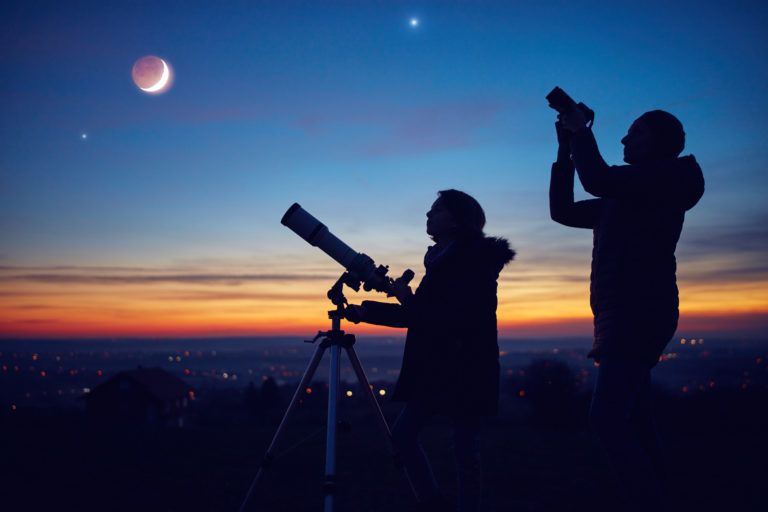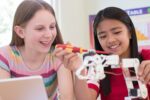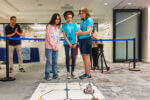NASA recently released photos from the James Webb Space Telescope, creating buzz around some of the clearest, unseen views of space ever captured. The concept of the solar system and space, in general, can be a lot for little minds to grasp. During a pivotal scientific discovery, it’s an exciting time to include young learners in popular science news to encourage discovery and passion for STEM. Focusing on planets and the sky also provides more tangible opportunities for learning, especially in the summer when science classes aren’t in session.
We can’t all be astronomers, but even the simplest space-oriented activities could be just what your child needs to get excited about science and space.
Go Stargazing
Some of the easiest astronomy observations are steps away from your front door. Take advantage of summer’s flexible schedule for your kids to look up and see the night sky. It might be as simple as pointing out when you can see stars while outside or out of a window during bedtime. Make stargazing an event and adventure on a warm summer night. Take a blanket and head outside, so you can lie back for the best view for stargazing. Depending on the location, you might be able to stargaze in your front yard, but light pollution in your area could make viewing difficult. If that’s the case, consider driving away from city lights or incorporating the activity into a camping trip!
If you’re stargazing with a young child, learning could be as simple as making a game of counting stars. Of course, it’s impossible to count all the stars in the sky, but that’s the point. Get your child familiar with the concept of size, particularly when it comes to space and the sky surrounding them every day. For a more advanced learner, consider hunting for constellations with the North Star as a guide. The night sky conditions may affect your success in identifying constellations but finding the Big Dipper and Little Dipper are often reliable, exciting discoveries.
Look up the next moon event
If stargazing loses its excitement, be on the lookout for astronomy events each month. Having a date to look forward to and take part in can generate excitement when the daily night sky views are taken for granted. These extraordinary events also present a time for added learning about space phenomena such as meteor showers and eclipses. Not only will your child get to observe the event, but they’ll also learn why it happens—a full circle learning moment.
In August alone, check out a special super moon on August 12th, a full moon that’s at its closest point to earth, making the moon appear its largest and brightest. That same night, try your luck at spotting the Perseid meteor showers. Later in the month, Saturn will be in opposition, meaning it’ll be visible from earth in its orbit path. These unique events don’t guarantee successful, clear viewing, which can set the stage for lessons on expectations and frustrations. When your child experiences a good observation night, it’ll be even more exciting.
Find NASA’s Snapshot from the day they were born
As fun as stargazing can be, your best space viewing will likely be from NASA telescope photos. In its over 30 years of operation, the Hubble Space Telescope is perhaps the most well-known. Looking at the telescope’s images is awe-inspiring and gives us a better sense of what space really looks like beyond the human eye. A fun feature NASA provides from these images is “What did Hubble See on Your Birthday?” Enter your child’s birthday, and the plug-in will show them a photo the telescope took on their birthday with additional scientific info. The birthday connection might be the simple motivation for space discovery.
Track the moon phases every night
For a daily astrological activity, consider getting your child into the habit of tracking the moon phases every night. If you have a calendar handy with your location set, get into the habit of associating each moon phase with how it looks in the night sky. Checking every night can encourage habits and memory as your child begins to associate the phase name with image recognition. Drum up excitement as the moon gets closer to a full moon, and watch as it slowly wanes. Science opportunities are at your fingertips this summer. Jumpstart your child’s interest in science in school, future careers, and beyond.
Do you have a budding scientist on your hands? Stride K12 provides students with real-world scientific learning all school year long. Consider enrolling in an online school so your child has more time to explore the natural world in real-time.






















































































































